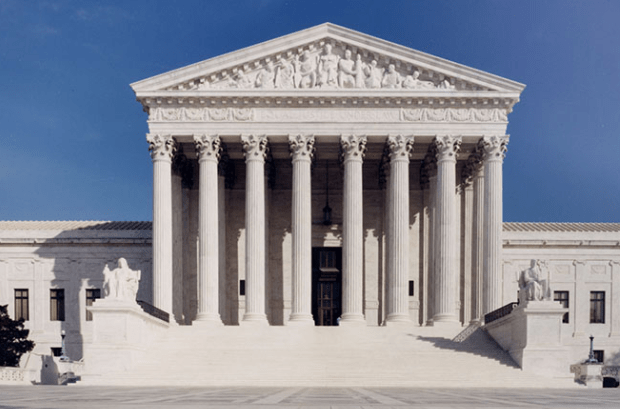From forcing 10-year-olds to birth babies and limiting essential perinatal care to not addressing emergencies and leaving interpreting the law up to providers — we have seen horrifying examples of how abortion bans are pro-death in an already collapsing maternal health care system.
Adolescents who give birth under 15 years old have an extremely high risk of eclampsia (seizures and death in labor), infection, preterm birth, and intrauterine growth restriction. The World Health Organization (WHO) names unsafe abortions as the number one reason for maternal death globally. Every 8 minutes in a developing nation one person dies from complications of an unsafe abortion. The WHO has also identified safe abortion as one of the easiest mechanisms to prevent maternal mortality.
What uniquely makes the United States a dangerous place for anti-abortion policies is that – our infrastructure for maternal and perinatal health is already in shambles. Recently a study that came out of CU Boulder — concluded that we will see an increase in 24% maternal mortality, nationally, within a couple of years of the abortion bans. This dramatic increase is partially explained by the fact that carrying a pregnancy in the US to term has a higher risk of maternal death than terminating that pregnancy. The study found a variation — when looking at the states that were projected to ban abortion, in states with a higher maternal mortality rate, Georgia (Georgia has the second-highest rate of maternal mortality of 48.4) researchers estimated that the maternal mortality rate will increase to 29% instead of 24%.

As you could guess, this will be much worse for Black birthing people. For Black people, the numbers are even more alarming: The expected increase in maternal deaths if abortion were to be banned in every state jumped 18% to 39%. For a nation that has the worst maternal mortality rate in the industrialized world — and some of the worst racial inequities, this increase would be expediting an already catastrophic public health issue.
Abortion bans are already increasing preventable deaths, as we see the lack of medical care for ectopic pregnancies, inability to treat miscarriages, increase in postpartum mood disorders, and or life-saving medications and prescriptions being put on hold for non-pregnancy related conditions.
According to the March of Dimes, about one in every 50 pregnancies in the U.S. is an ectopic pregnancy (which is when an egg embeds into something outside of the uterine wall — like a Fallopian tube). There are zero chances of a fetus surviving an ectopic pregnancy. If it is not treated, ectopic pregnancies can erupt – which are fatal to the person carrying the pregnancy. Ectopic pregnancies need to be treated as emergencies that necesítate emergency care, in order to save the pregnant person’s life. Ectopic pregnancy represents approximately 10% of maternal deaths. Deaths are often connected to delays between getting consultation after reporting the first symptom, and then, getting a diagnosis. Ectopic pregnancies are also the leading cause of death of the pregnant person in the first trimester. Treatment is needed immediately when doctors and pharmacists feel threatened by ambiguous definitions in their respective states. Recently, a pharmacist in Austin refused to fill a prescription for the treatment of an ectopic pregnancy due to the pharmacist misunderstanding the new abortion ban in Texas.
We have seen miscarriage care delayed – since – miscarriage treatment is an abortion, medical abortion, or a D & C. Without medical assistance during a miscarriage, especially later in the pregnancy, the patient faces risks such as deadly hemorrhaging and sepsis.
Homicide is currently the top cause of maternal death in the United States. Robust research shows us that women in the US die by homicide more often than they die of pregnancy-related causes while pregnant, and they are most often killed by their partners. In fact, pregnant partners are killed by their non-pregnant partners at twice the rate of deaths caused by placental disorders and or hemorrhage. Sadly, becoming pregnant increases your chances of not just being abused — but being killed: between the ages of 10-44 women who were pregnant or freshly postpartum were murdered at a rate of 16% higher than those women who were not pregnant but killed by a domestic partner. Rape and nonconsensual pregnancy are common practices of abusers. Abortion bans put victims of domestic abuse in fatal situations since a victim’s likelihood of becoming pregnant and staying pregnant is now much higher in states that have already banned abortion – increasing the likelihood of them being killed by their partner.
The leading cause of maternal death worldwide is obstetric hemorrhage. Hemorrhages necessitate immediate, often life-saving treatment. A lapse in care because of ambiguous laws and providers questioning what constitutes an emergency to the pregnant person’s life will cost fatal wait times for patients.
For the last half of a century rationales for abortion in this country – like rape, incest and to preserve ‘the life of the mother’ were accepted by the general American public, including those that were anti-abortion typically. When Roe V Wade was overturned the Supreme Court challenged this tradition by doing away with the rape and incest exceptions. Many of these bans do claim to have exemptions, in order to ‘maintain the life of the mother’, which leaves individual providers up to interpret the law.
Considering that physicians can now be fired for “aiding and abetting” unlawful abortions – the ambiguity turns into a wait time – in which individual providers decide whether to intervene and how ‘serious’ a circumstance is. This creates an opportunity to dissuade a person from performing an abortion, an opportunity to practice personal bias — or, consequently, less time to save a birthing person’s life.
Simply put, restricting access to abortion does not reduce the occurrence of abortions, it only increases preventable death, dramatically worsening perinatal health care in a country that struggles with it already. Anti-abortion laws are pro-death and fatally dangerous for pregnant people.
Kayla Frawley (she/her/ella) is a former midwife, and the current Abortion Rights and Reproductive Rights Director for Progress Now Colorado.




